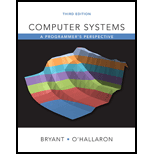
Explanation of Solution
Implementation of a concurrent prethreaded version of the TINY web server:
For code “echoservers.c” and “echoservers.h” file:
Use section 12.2.1 code.
For code “tiny.c” and “tiny.h”:
Use section 11.6 code.
sample.html:
<!DOCTYPE html>
<html>
<head>
<meta charset="utf-8" />
<title>Home</title>
</head>
<body>
Tiny server Example
</body>
</html>
main.c:
#include <stdio.h>
#include "csapp.h"
#include "echoservers.h"
//Main function
int main(int argc, char **argv)
{
//Declare variable
int listenfd, connfd;
socklen_t clientlen;
struct sockaddr_storage clientaddr;
static pool pool;
/* If the arguments does not contain two arguments, then display the below statement */
if (argc != 2)
{
fprintf(stderr, "usage: %s <port>\n", argv[0]);
fprintf(stderr, "use default port 5000\n");
listenfd = Open_listenfd("5000");
}
//Otherwise call Open_listenfd function
else
{
listenfd = Open_listenfd(argv[1]);
}
//Then call the init_pool function
init_pool(listenfd, &pool);
//Check condition
while (1)
{
/* Wait for listening or connected descriptor(s) to convert ready */
pool.ready_set = pool.read_set;
pool.nready = Select(pool.maxfd+1, &pool...
Want to see the full answer?
Check out a sample textbook solution
Chapter 12 Solutions
Computer Systems: A Programmer's Perspective Plus Mastering Engineering With Pearson Etext -- Access Card Package (3rd Edition)
- For this question you will perform two levels of quicksort on an array containing these numbers: 59 41 61 73 43 57 50 13 96 88 42 77 27 95 32 89 In the first blank, enter the array contents after the top level partition. In the second blank, enter the array contents after one more partition of the left-hand subarray resulting from the first partition. In the third blank, enter the array contents after one more partition of the right-hand subarray resulting from the first partition. Print the numbers with a single space between them. Use the algorithm we covered in class, in which the first element of the subarray is the partition value. Question 1 options: Blank # 1 Blank # 2 Blank # 3arrow_forward1. Transform the E-R diagram into a set of relations. Country_of Agent ID Agent H Holds Is_Reponsible_for Consignment Number $ Value May Contain Consignment Transports Container Destination Ф R Goes Off Container Number Size Vessel Voyage Registry Vessel ID Voyage_ID Tonnagearrow_forwardI want to solve 13.2 using matlab please helparrow_forward
- a) Show a possible trace of the OSPF algorithm for computing the routing table in Router 2 forthis network.b) Show the messages used by RIP to compute routing tables.arrow_forwardusing r language to answer question 4 Question 4: Obtain a 95% standard normal bootstrap confidence interval, a 95% basic bootstrap confidence interval, and a percentile confidence interval for the ρb12 in Question 3.arrow_forwardusing r language to answer question 4. Question 4: Obtain a 95% standard normal bootstrap confidence interval, a 95% basic bootstrap confidence interval, and a percentile confidence interval for the ρb12 in Question 3.arrow_forward
 Systems ArchitectureComputer ScienceISBN:9781305080195Author:Stephen D. BurdPublisher:Cengage Learning
Systems ArchitectureComputer ScienceISBN:9781305080195Author:Stephen D. BurdPublisher:Cengage Learning Programming with Microsoft Visual Basic 2017Computer ScienceISBN:9781337102124Author:Diane ZakPublisher:Cengage Learning
Programming with Microsoft Visual Basic 2017Computer ScienceISBN:9781337102124Author:Diane ZakPublisher:Cengage Learning New Perspectives on HTML5, CSS3, and JavaScriptComputer ScienceISBN:9781305503922Author:Patrick M. CareyPublisher:Cengage Learning
New Perspectives on HTML5, CSS3, and JavaScriptComputer ScienceISBN:9781305503922Author:Patrick M. CareyPublisher:Cengage Learning Principles of Information Systems (MindTap Course...Computer ScienceISBN:9781305971776Author:Ralph Stair, George ReynoldsPublisher:Cengage Learning
Principles of Information Systems (MindTap Course...Computer ScienceISBN:9781305971776Author:Ralph Stair, George ReynoldsPublisher:Cengage Learning LINUX+ AND LPIC-1 GDE.TO LINUX CERTIF.Computer ScienceISBN:9781337569798Author:ECKERTPublisher:CENGAGE L
LINUX+ AND LPIC-1 GDE.TO LINUX CERTIF.Computer ScienceISBN:9781337569798Author:ECKERTPublisher:CENGAGE L Principles of Information Systems (MindTap Course...Computer ScienceISBN:9781285867168Author:Ralph Stair, George ReynoldsPublisher:Cengage Learning
Principles of Information Systems (MindTap Course...Computer ScienceISBN:9781285867168Author:Ralph Stair, George ReynoldsPublisher:Cengage Learning





